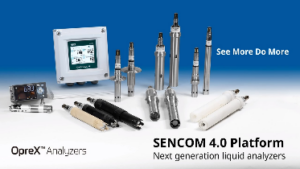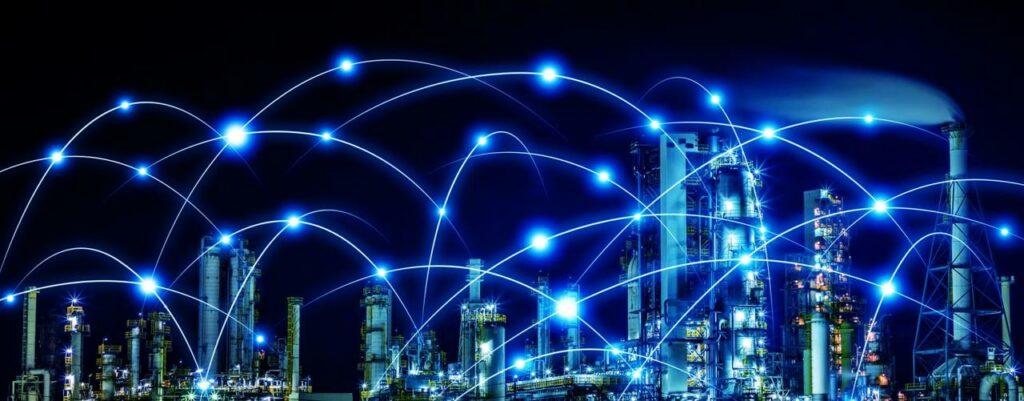August is National Water Quality Month, a time to focus on something we normally take for granted. In many countries, water quality standards are gradually becoming more restrictive. Fewer skilled technical staff in the field are required to do more with fewer resources. Maintaining existing pH and conductivity measurements with conventional water-monitoring instruments can be challenging within the confines of current panel space. Therefore, changing requirements demand more measurements and reduced maintenance costs. In this blog article, you will learn about smart liquid monitoring and how you can benefit from them.
How Smart Liquid Monitoring can change your life
Did you know that over 63% of maintenance time is wasted? This is due to routine checks of field deceives or responding to situations where no issue is identified. (source: Fieldbus Foundation). This raises the question: How can a system be expanded to provide a faster and more accurate picture of liquid process chemistry without increasing panel space? Yokogawa investigated this issue and developed a new digital technology for liquid monitoring. Digital technology has redefined how the industry uses liquid analyzers, improving measurement accuracy, and reducing maintenance costs. Applications using smart sensor technology establish an ideal operation, making water monitoring systems simpler to use and the entire measurement process more efficient. An increasing number of companies are switching from analog to smart liquid monitoring solutions. What are the exact reasons for it?
[ot-video][/ot-video]
Reason #1 Calibration and pre-configuration prior to field installation
Conventional electrochemical sensors with analog outputs have been around for decades but using them is laborious and time-consuming. Also, electrode sensor calibration is manual and must be completed on a regular basis. On the other hand, smart sensors allow calibration and pre-configuration prior to field installation. Smart sensors store calibration data in an internal memory chip, allowing simple hot-swap or plug and play replacement. Thus, plant downtime and the need for skilled maintenance staff are reduced. When a sensor is connected to an analyzer, the latest calibration data is uploaded automatically. This saves you from being called out to deal with electrode damage.
Reason #2 Getting the best of both worlds
Most smart systems can work with both digital and analog sensors, allowing the system to be installed directly; as well as swapped to digital at a later stadium. This means when the time is right, the new utility for plant solution- the smart system- is ready to go digital.
Reason #3 Save Time & Money
Time is money and when a process is offline, every second counts. The smart system enables secure calibration and provides continuous and reliable measurement, preventing impurities from reaching the turbines and improves power generation efficiency, saving money by avoiding lengthy maintenance and repair issues. Besides, digital real-time diagnostics inform you immediately when conductivity readings spike, so immediate action can be taken to avoid damage.
Reason #4 Access Data Easily
Handwriting calibration values and manually transferring the data to spreadsheets is tedious and time-consuming. Smart systems store the data, so operators can get on with more valuable parts of the job. SD card capabilities allow configurations to be copied, reducing set up times. Troubleshooting and backup data are available for easy archiving and viewing.
Reason #5 Quick & Easy Installation
Most smart systems have straightforward and clear guidance for configuration and trouble-free setup, allowing them to easily integrate into an existing process. If you are in the lookout for easy set-up for installation and configuration, then smart systems are well-suited for you!
SENCOM 4.0 Platform: The Next Generation in Smart Liquid Monitoring
[ot-video][/ot-video]
The SENCOM smart system is an innovative platform that measures pH/ORP, conductivity, and dissolved oxygen in real-time. It optimizes maintenance, reduces configuration time, and simplifies in-field maintenance and calibration across a wide range of processes from wastewater treatment to process measurement, cutting your CAPEX and OPEX. The system combines a reusable smart adapter with a multi-input analyzer, offering analog or digital flexibility for up to five sensors at once using just two sensor module slots. The multi-input flexibility and simplified selection enable connection of up to five sensors at a time without the need for multiple analyzers. This gives operators a faster and more accurate picture of what is happening to the liquids.
More info?
Do you have questions about SENCOM 4.0 Platform, or do you want information about how this product can contribute to a more efficient and safer process for your company? Feel free to contact us.
Related Products & Solutions

The secret to keeping your plant’s steam and water cycle well-balanced




